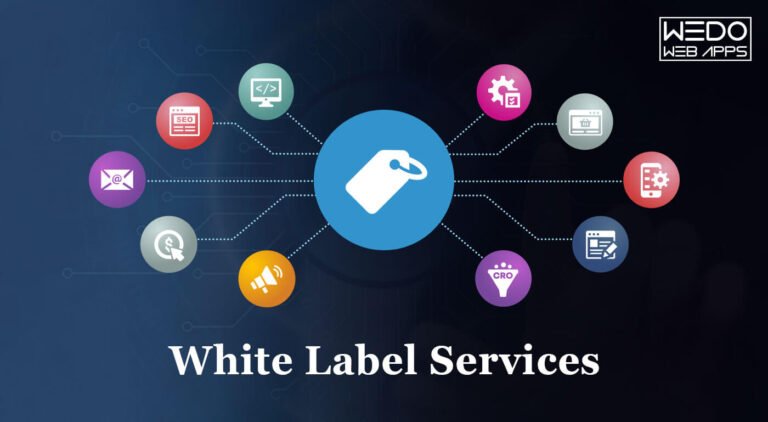Top Multi-Vendor Marketplaces in 2025: What You Can Learn From Them
Multi-vendor marketplaces have come a long way in just a few short years. What started as simple platforms for multiple sellers to list their products has now evolved into highly sophisticated ecosystems driving a huge chunk of global eCommerce. In 2025, these marketplaces are setting new standards—not just in what they offer, but how they operate behind the scenes.
As more entrepreneurs and businesses look to build their own marketplaces, it’s crucial to study the platforms already doing it well. What technologies are they using? How do they support vendors? What makes them stand out in a crowded market?
In this article, we’ll take a closer look at the top multi-vendor marketplaces in 2025 and uncover the strategies that make them successful. Whether you’re planning your first platform or refining an existing one, there’s plenty to learn from the best in the game.
What Is a Multi-Vendor Marketplace?
A multi-vendor marketplace is an online platform where different sellers offer their products or services under one roof. Unlike single-seller stores, these marketplaces allow independent vendors to manage their own listings while customers browse and buy from a wide range of options—all in one place. The platform itself handles infrastructure like payments, customer service frameworks, and overall user experience, making it easier for vendors to focus on selling.
Key Features of Multi-Vendor Marketplaces
Multiple sellers, single platform
One of the biggest advantages is the variety. Buyers can shop across dozens—or even thousands—of vendors without ever leaving the site. This creates a richer experience and builds trust in the platform itself.
Vendor dashboards and management tools
Each seller typically gets their own backend dashboard, giving them control over product listings, pricing, inventory, and order management. These tools are essential for efficiency and autonomy.
Commission models and payment gateways
Marketplaces usually operate on a commission basis, earning a percentage from each transaction. Many also integrate secure, flexible payment gateways that support multiple currencies and payout systems.
Why They’re Booming in 2025
Increased demand for variety and convenience
Consumers now expect fast, seamless shopping with access to as many choices as possible. Multi-vendor platforms deliver that, making them a go-to solution for everyday purchases.
Advanced tech like AI, personalization, and automation
In 2025, the top marketplaces use AI to personalize recommendations, streamline search results, and automate tasks for both sellers and buyers. These enhancements aren’t just nice-to-haves—they’re competitive necessities.
Growing trust in digital commerce
With more secure payment systems and transparent return policies, people are more comfortable than ever making purchases online. That growing confidence fuels marketplace success and continued adoption.
Read Also: The Role of Business Brokers in Buying or Selling a Business
Top Multi-Vendor Marketplaces to Watch in 2025
As the eCommerce landscape continues to evolve, some marketplaces are setting the standard with innovation, reach, and user experience. Here are the standout platforms in 2025—and what makes them worth watching.
Amazon
Amazon continues to dominate with its massive product catalog, global logistics network, and unmatched Prime ecosystem. In 2025, its strength lies in how well it blends scale with personalization. AI-powered product suggestions and seamless checkout flows make shopping effortless for customers and high-converting for sellers.
Etsy
Focused on handmade, vintage, and unique items, Etsy has carved out a loyal, niche-driven community. What sets it apart this year is its growing investment in sustainable selling and empowering small creators. It’s a model of how curation and community can compete with scale.
Walmart Marketplace
Walmart leverages its massive brick-and-mortar footprint to enhance its online presence. In 2025, the seamless integration between physical stores and its marketplace gives it a strong omnichannel edge. Sellers benefit from a trusted brand and buyers enjoy flexible delivery and pickup options.
Alibaba
As the global leader in B2B eCommerce, Alibaba remains essential for manufacturers, wholesalers, and bulk buyers. Its sophisticated vendor tools and supplier-focused infrastructure make it the top choice for large-scale sourcing, especially in Asian markets.
Zalando
Europe’s fashion-focused marketplace continues to thrive by prioritizing customer service and ethical commerce. Zalando’s return policies, transparent supply chains, and push for sustainable fashion have made it a favorite among younger, values-driven shoppers.
What You Can Learn from These Marketplaces
The success of today’s leading multi-vendor platforms isn’t just about size or brand recognition—it’s about strategy. Each of these marketplaces has leaned into specific strengths that can offer valuable takeaways for anyone looking to build or grow a similar platform.
Invest in a Strong Vendor Ecosystem
Behind every successful marketplace is a network of well-supported, motivated sellers. Platforms like Etsy and Alibaba give vendors the tools they need to succeed—custom dashboards, data insights, marketing features, and responsive support. Empowering your sellers leads to better listings, happier customers, and stronger long-term growth.
Leverage Data and Personalization
Amazon is a prime example of how data can drive conversions. Through personalized recommendations, predictive search, and tailored marketing, they turn browsing into buying. Even smaller marketplaces can benefit from integrating smart product suggestions and tracking user behavior to create a more intuitive shopping experience.
Build Trust and Security
Trust is a major driver of customer loyalty. Marketplaces like Zalando and Walmart win shoppers over with transparent policies, easy returns, and clear communication. As you scale, don’t overlook the small things—fast support, visible reviews, secure payment gateways, and clear refund processes all help build credibility.
How to Build a Multi-Vendor Marketplace in 2025
Learning from successful marketplaces is one thing—building your own is another. Fortunately, with the right approach and support, launching a multi-vendor platform in today’s market is more achievable than ever.
Start with the Right Platform
Before anything else, you need a solid technical foundation. Choose a marketplace solution that’s scalable, secure, and easy to customize. Mobile responsiveness, fast load times, and a clean user interface aren’t just nice-to-haves—they’re musts in 2025.
Look for features that simplify things for both vendors and admins: intuitive dashboards, product management tools, order tracking, flexible commission settings, and reliable integrations with payment gateways.
Work With Experts
Building a custom marketplace from the ground up can be complex—especially if you’re starting without a tech team. That’s where experienced partners come in. Collaborating with the right development agency can save you time, reduce risk, and set your platform up for long-term success.
If you’re serious about launching a high-performing platform, it’s a smart move to choose WebDesk Solution for multi-vendor marketplace development. Their team brings the technical know-how and industry experience to help you launch faster—and smarter.
Final Thoughts
The most successful multi-vendor marketplaces in 2025 aren’t just selling products—they’re building ecosystems. They empower sellers, streamline the buyer experience, and adapt quickly to changing technology and consumer expectations.
Whether you’re looking to launch a new platform or improve an existing one, studying the leaders in this space gives you a major advantage. Learn from their strategies, focus on the user experience, and don’t hesitate to bring in the right development support when you need it.
The market is growing—and there’s still plenty of room for new, innovative marketplaces to thrive.

